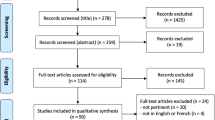Summary
Self-retaining brain retractors with different profiles have been constructed in order to decrease the risk of cerebral ischaemia during intracranial operations. Flat retractors are more easy to handle than curved, because the flat retractors can be bent into the desirable shape. To estimate the regional cerebral blood flow (rCBF) using retractors with three different profiles (flat, flat with rounded edges and curved) autoradiography with carbon-14 (14C) iodoantipyrine was performed in rats. After craniotomy over the parietal cortex lead weights with the three different profiles corresponding to 20 mm Hg of brain retractor pressure (BRP) were placed on the cortex for 15 minutes. rCBF (average values) in cortex beneath the flat retractors was 80 ml/100 gm/min (n=10), for flat ones with rounded edges 90 ml/100 gm/min (n=5) and for the curved retractors 75 ml/100 gm/min (n=5). The differences were not significant. Even with a BRP of 30 mm Hg no differences were observed between flat (n=3) and curved (n=3) weights. In control animals craniotomy showed no influence on the rCBF (n=3).
No further risk for ischaemic nerve cell damage could be demonstrated by using the most easily-handled retractors, the flat ones, instead of those more or less curved.
Similar content being viewed by others
References
Albin MS, Bunegin L, Bennett MHet al (1977): Clinical and experimental brain retraction pressure monitoring. Acta Neurol Scand 56 [Suppl 64]: 522–523
Albin MS, Bunegin L, Dujovny Met al (1975): Brain pressure during intracranial procedures. Surg Forum 26: 499–500
Albin MS, Bunegin L, Helsel Pet al (1980): Intracranial pressure and regional cerebral blood flow responses to experimental brain retraction pressure. In: Shulman Ket al (eds) Intracranial pressure IV. Springer, Berlin Heidelberg New York, pp 131–135
Astrup J (1982): Energy-requiring cell function in the ischemic brain. Their critical supply and possible inhibition in protective therapy. J Neurosurg 56: 482–497
Astrup J, Siesjö BK, Symon L (1981): Thresholds in cerebral ischemia—the ischemic penumbra. Stroke 12: 723–725
Date H, Shima T, Hossmann KA (1983): Relationship between local cerebral perfusion pressure, blood flow and electrophysiological function during middle cerebral artery constriction in cats. J CBF Metabolism 3 [Suppl 1]: 357–358
Gjedde A, Hansen AJ, Siemkowicz E (1980): Rapid simultaneous determination of regional blood flow and blood-brain glucose transfer in brain of rat. Acta Physiol Scand 108: 321–330
Greenberg IM (1981): Staircase concept of instrument placement in microsurgery. Neurosurgery 9: 696–702
Laha RK, Dujovny M, Rao Set al (1979): Cerebellar retraction: Significance and sequelae. Surg Neurol 12: 209–215
Miller JR, Myers RE (1970): Neurological effects of systemic circulatory arrest in the monkey. Neurology 20: 715–724
RosenØrn J, Diemer NH (1982): Reduction of regional cerebral blood flow during brain retraction pressure in the rat. J Neurosurg 56: 826–829
RosenØrn J, Diemer NH (1985): The risk of cerebral damage during graded brain retractor pressure in the rat. J Neurosurg 60: 608–611
RosenØrn J, Diemer NH (1985): Intermittent versus continuous brain retractor pressure as protective procedure against ischemic brain cell damage. In: Auer LM (ed) Timing of aneurysm surgery. Walter de Gruyter Company, Berlin, pp 381–384
Shulman K (1965): Small artery and vein pressures in the subarachnoid space of the dog. J Surg Res 5: 56–61
Sugita K, Kobayashi S, Takemae Tet al (1980): Direct retraction method in aneurysm surgery. J Neurosurg 53: 417–419
Sundt TM, Kobayashi S, Fode CNet al (1982): Results and complications of surgical management of 809 intracranial aneurysms in 722 cases. J Neurosurg 56: 753–765
Symon L (1983): Perspectives in aneurysm surgery. Acta Neurochir (Wien) 63: 5–13
Yasargil MS (1969): Aneurysms, Arteriovenous Malformations and fistulae. In: YaŞargil MG (ed) Microsurgery: applied to neurosurgery. G Thieme, Stuttgart New York London, pp 119–150
Yokoh A, Sugita K, Kobayashi S (1983): Intermittent versus continuous brain retraction. J Neurosurg 58: 918–923
Author information
Authors and Affiliations
Rights and permissions
About this article
Cite this article
RosenØrn, J., Diemer, N.H. The influence of the profile of brain retractors on regional cerebral blood flow in the rat. Acta neurochir 87, 140–143 (1987). https://doi.org/10.1007/BF01476065
Issue Date:
DOI: https://doi.org/10.1007/BF01476065




